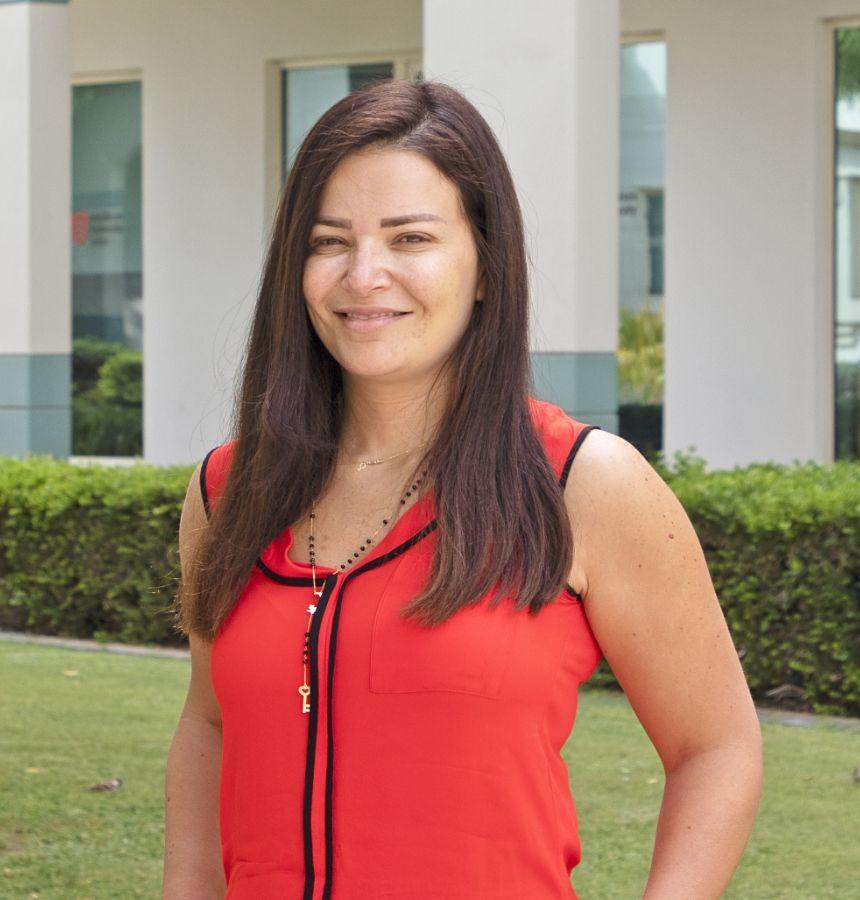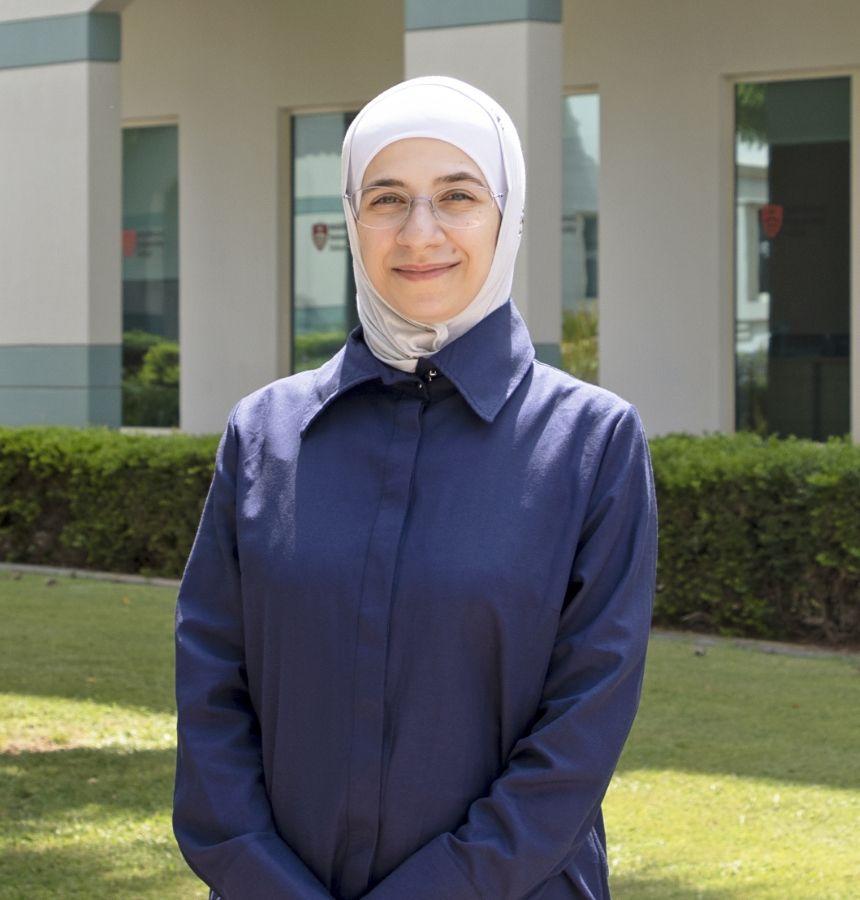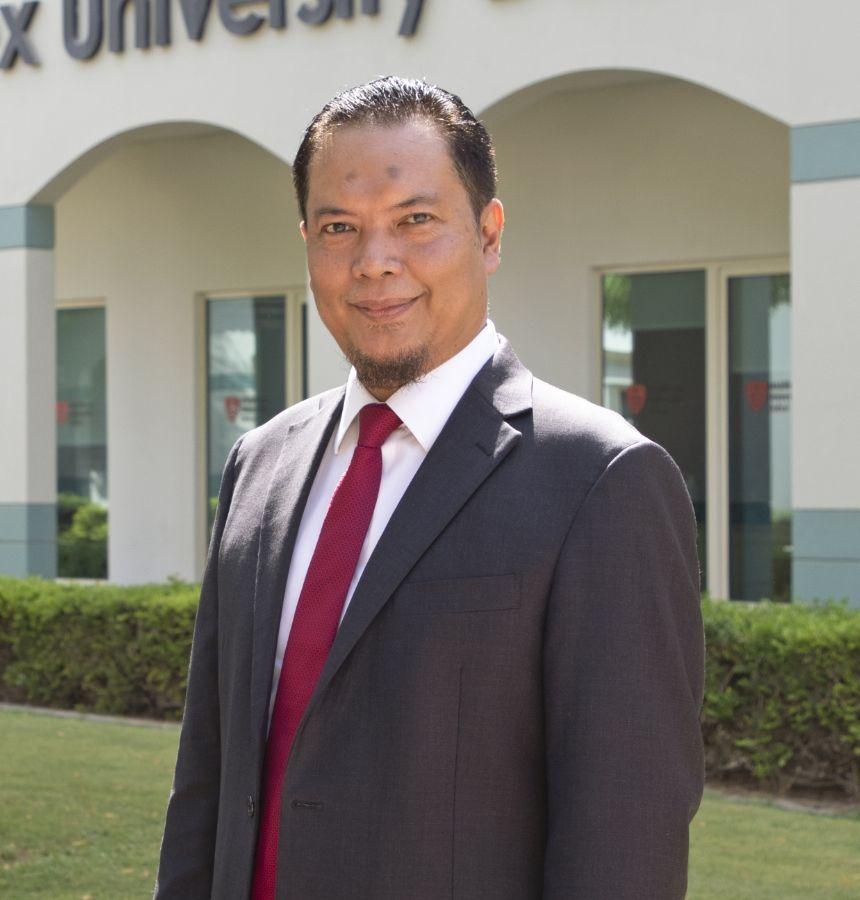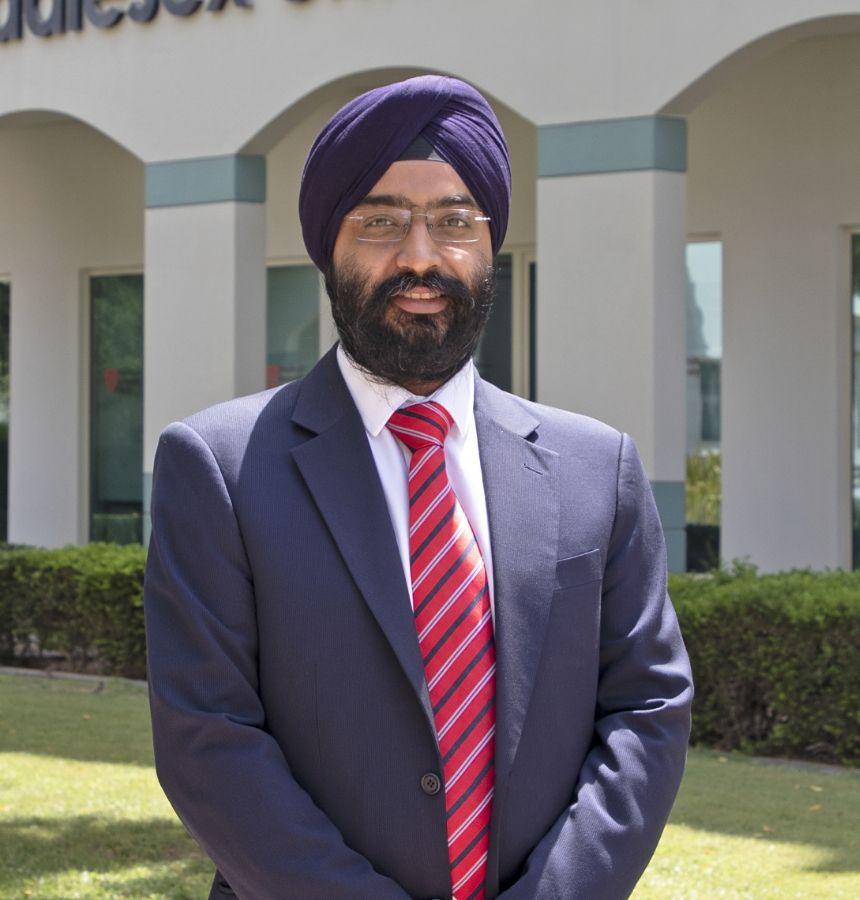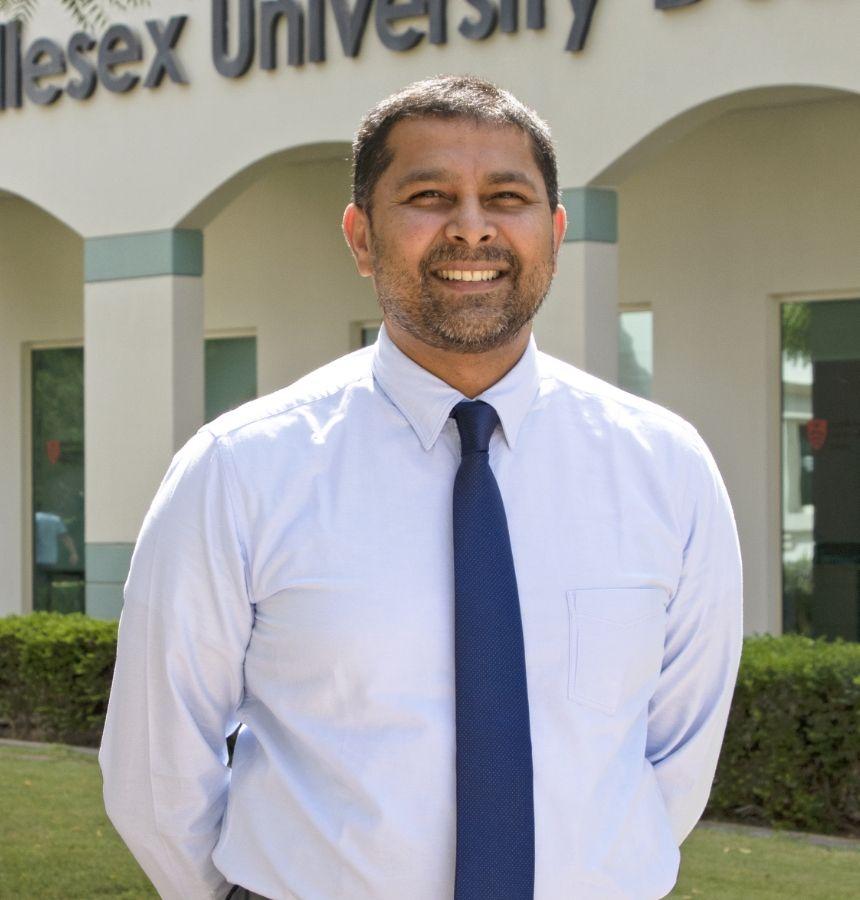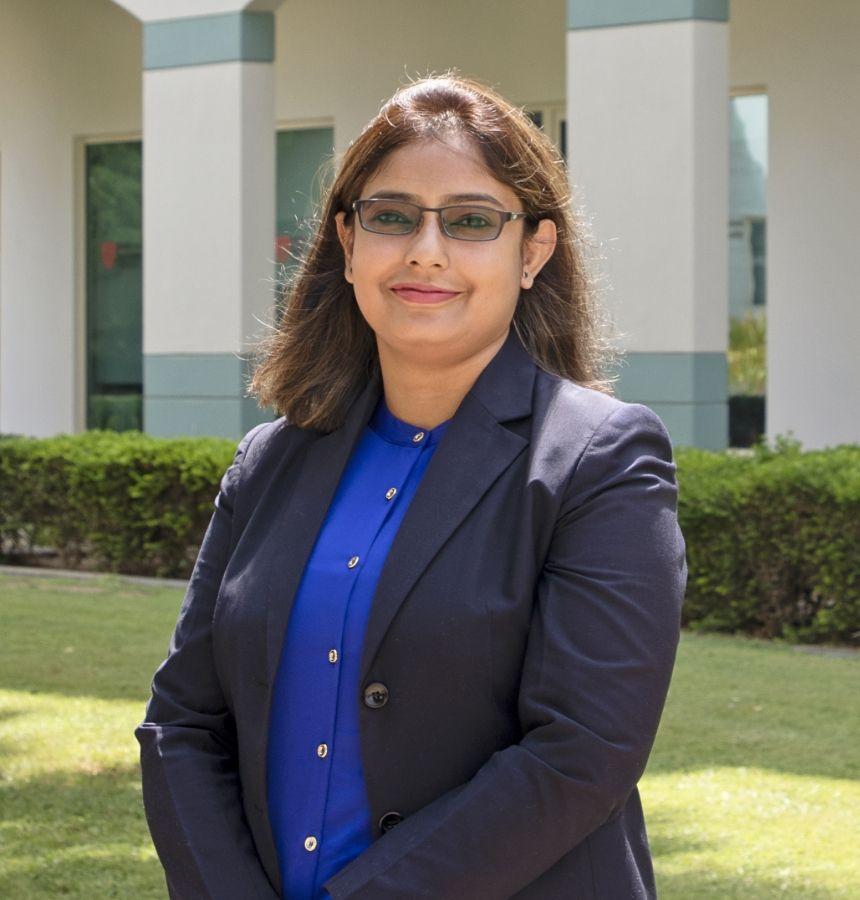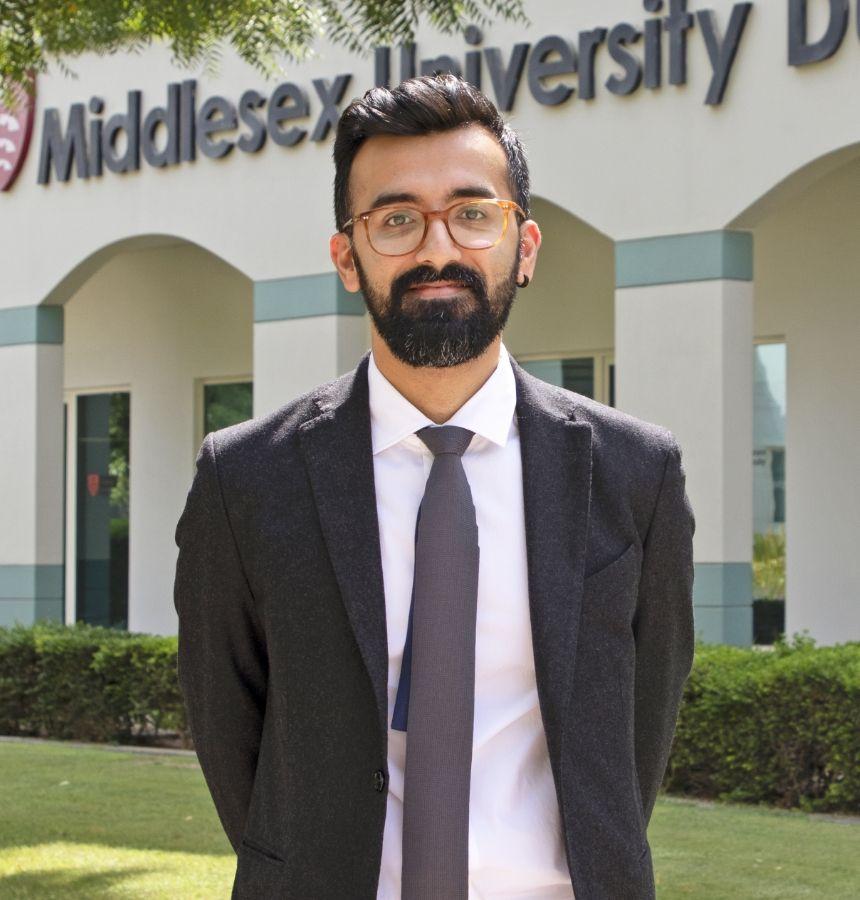
Dr Sameer Kishore SFHEA
- ROLE:Campus Programme Coordinator MSc Robotics, Head and Founder, VRX Lab, Associate Professor
- CONTACT:+971 (0)4 367 8100
- EMAIL:[email protected]
Dr. Sameer Kishore is programme coordinator of the MSc. Robotics programme and the head and founder of the VRX Lab. His main research deals with human-robot interaction with a specific focus on studying the effects of having an illusion of body ownership over a humanoid robotic body. Dr. Kishore completed his PhD at the EventLab, University of Barcelona where he worked on developing systems that allowed him to investigate these implications of body ownership over remotely located robots and applying this technology to various real-world situations. After finishing his PhD, he spent a year as a post-doctoral researcher at the EventLab, where he was involved in a research project funded by the Government of Spain, regarding the effect of appearance of a virtual body on the higher-level cognitive functioning and implicit behaviours in immersive virtual reality. As part of his research, he has worked with state-of-the-art technological systems and carried out several studies, which have been published in prestigious peer-reviewed journals and conferences such as The Lancet Psychiatry and IEEE Computer Graphics & Applications. His work has received widespread media coverage, including channels such as the BBC, The New Yorker and The Guardian. The work carried out as part of his PhD has been displayed at museums in Barcelona (CCCB) and Madrid (Espacio Fundacion Telefonica) as part of an exhibition titled ‘Brains’. Dr. Kishore has a Master’s degree in computer graphics and computer vision from University College London, UK and a bachelor’s degree in computer science engineering from Birla Institute of Technology and Science, Dubai.
- PhD University of Barcelona, Spain
- MSc Computer Graphics, Vision and Imaging, University College London, UK
- BEng Computer Science Engineering, BITS Pilani, Dubai, UAE
- 2022: Innovation Award for Creating Impact on Global Challenges – VRX Lab
- 2016: FI-DGR Award for PhD Thesis from the Government of Catalunya, Spain
- 2013 - 2016: FI-DGR Pre-Doctorate grant awarded by the Government of Catalunya, Spain, co-funded by the European Commission
Dr Sameer’s research interests include full-body ownership illusions with humanoid robots, ethical and technological implications of teleoperated humanoid robots, and applications with virtual reality for healthcare and psychology.
- Kishore, S., Spanlang, B., Iruretagoyena, G., Halan, S., Szostak, D., & Slater, M. (2021). A Virtual Reality Embodiment Technique to Enhance Helping Behavior of Police Towards a Victim of Police Racial Aggression. PRESENCE: Virtual and Augmented Reality, 28, 5–27. doi:10.1162/pres_a_00339
- Aymerich-Franch, L., Kishore, S., & Slater, M. (2019). When Your Robot Avatar Misbehaves You Are Likely to Apologize: An Exploration of Guilt During Robot Embodiment. International Journal of Social Robotics, 1-10.
- Freeman, D., Haselton, P., Freeman, J., Spanlang, B., Kishore, S., Albery, E., Denne, M., Brown, P., Slater, M. & Nickless, A. (2018). Automated Psychological Therapy Using Immersive Virtual Reality for Treatment of Fear of Heights: A Single-Blind, Parallel-Group, Randomised Controlled Trial. The Lancet Psychiatry. ISSN 2215-0366.
- Banakou, D., Kishore, S., Slater, M. (2018). Virtually Being Einstein Results in an Improvement in Cognitive Task Performance and a Decrease in Age Bias. Frontiers in Psychology, 9, 917.
- Kishore, S., Navarro, X., Bourdin, P., Berkers, K., Friedman, D., & Slater, M. (2016). Multi-Destination Beaming: Being in Three Places at Once Through Robotic and Virtual Embodiment. Frontiers in Robotics and AI, 3, 65.
- Kishore, S., Navarro, X., Dominguez, E., de la Peña, N., & Slater, M. (2016). Beaming into the News: A System for and Case Study of Tele-Immersive Journalism. IEEE Computer Graphics and Applications. 38(2), 89.
- Kishore, S., Gonzalez-Franco, M., Hintermuller, C., Kapeller, C., Guger, C., Slater, M., & Blom, K. J. (2014). Comparison of SSVEP BCI and Eye Tracking for controlling a humanoid robot in a social environment. Presence: Teleoperators and Virtual Environments, 23(3).
- Spanlang, B., Navarro, X., Normand, J.-M., Kishore, S., Pizarro, R., & Slater, M. (2013). Real time whole body motion mapping for avatars and robots. In Proceedings of the 19th ACM Symposium on Virtual Reality Software and Technology - VRST ’13 (p. 175). New York, New York, USA: ACM Press.

